Over half the population of the Cayman Islands are active on LinkedIn – are you one of them? Whether you’re just getting your profile set up, or have had one for quite some time, it’s essential to optimize your LinkedIn profile.
Why Use LinkedIn?
What’s the deal with LinkedIn? You’ve probably heard it coined a ‘professional network’, but what exactly does that mean, and how is it any different or better than using Facebook?
Let’s start with the fundamental difference between LinkedIn and Facebook:
LinkedIn is different than most social media platforms as it was designed to help build business connections and for professional networking. Facebook, on the other hand, is designed as a personal social media platform to connect you with friends and family.
LinkedIn is a professional networking base that can be used for:
• Building and nurturing a strong network
• Finding like-minded individuals and groups
• Making and seeking out recommendations
• Showcasing your personal brand
• Finding work and for looking to hire
Whatever your personal and professional goals are, it is likely that with the right effort, attention, and care, your LinkedIn profile will help boost your career.
Let’s Look at the Stats
44,000 job applications are submitted through LinkedIn daily across the globe
87% of recruiters use LinkedIn to find candidates for jobs
94% of recruiters use LinkedIn to vet job candidates
It’s not enough just to have a LinkedIn profile, though; you need to optimize it. By optimizing your LinkedIn profile, you will rank higher in searches by recruiters and hiring managers, resulting in more job opportunities.
Specifically, by having a fully optimized profile, there is a 132% increase in LinkedIn profile views and 3x the amount of search appearances.
Optimize Your LinkedIn Profile
Our team here at Nova have done all the hard work for you and pulled together everything you need to know to better optimize your LinkedIn profile. Read on for expert-tested tips and tricks to make your profile stand out from the crowd—and start getting noticed by recruiters.
Technical Things to Consider
-
Choose Your Photo
It’s best to use a high-quality, professional headshot (no selfies allowed!), and for size, the recommendations are 400x400px to ensure it comes out crisp.
When we say professional headshot, that doesn’t mean you need to go out and book yourself a photoshoot with a photographer, but it does mean you shouldn’t be putting up a selfie from the beach. For tips on taking a professional headshot with just your phone, watch this tutorial here.
-
Get a Custom URL
When you sign up for LinkedIn, it will assign you a URL, which is a combination of your name and randomly selected numbers and letters. This makes it difficult to remember and to publicise/share, so do yourself a favour and create a custom URL.
Need help creating your custom URL? Watch our tutorial here.
Work On Content
-
Write a Star-Studded Headline
Your LinkedIn headline is prime real estate, so don’t pass up the opportunity to optimize it! Your headline is arguably the most visible section of your LinkedIn profile: it is at the top of your profile page, it introduces you on newsfeed posts when you share/like/comment, it appears in the “People You May Know” section. It also introduces your profile to recruiters on LinkedIn job applications.
By default, if you don’t set it, your headline will be your most recent job title and company name. While that can be okay, it doesn’t say much about YOU, does it? Make sure you include in your headline the most relevant keywords to your target jobs, as it makes you easier to find when someone is looking for a specific skill set.
-
Craft a Strong Summary
Think of this section as a professional bio that builds on what you mentioned in your headline above. Take some time and consider what you do and why you are good at it. Spend the time to make your summary informative and engaging and put into words what your personal brand is and what you want to be known for.
-
Include important Keywords
When you’re crafting your headline and summary, utilize job descriptions to help guide you by including essential points and keywords (note: we said keywords, not buzzwords!)
Find a few job descriptions for roles that you are targeting in your job search (if you don’t have an exact one, google samples) and dump them into a word cloud tool like Wordle.
See those words that stand out and are larger than the rest? Those are more likely than not the terms that recruiters and hiring managers are looking for in their next hire for that type of role. Take note of those words and make sure you have them sprinkled thoughtfully throughout your profile and you’ll be well on your way to a more optimized profile.
-
Inject Your Personality
It’s easy to look at LinkedIn as a digital version of your CV or Resume, but don’t forget this is still a social media platform, and people want to get a sense of you. Inject your personality. Let people know your values and passions. One of the members of the Nova team here has in her profile highlighted that she is a tea lover and Friends tv show addict!
-
Include a Current Job Entry
Did you know that you score lower for jobs on LinkedIn if you don’t have a current position in your LinkedIn Experience section? Why? Because when recruiters are using LinkedIn to search profiles, it often looks at their current job title exclusively.
But what if you’re currently unemployed? Our best advice is to create a current position which includes the job title(s) you’re targeting (Marketing Specialist in Training/Aspiring Marketing Specialist) followed by a phrase like ‘In Transition’ or ‘Seeking New Opportunity’ in the ‘Company Name’ box.
-
It’s Not Always About the Job
Do you speak another language? Do you have an industry-specific qualification? Do you have a passion for volunteering and work at the humane society on the weekends? While it may not seem like much, having these seemingly small details on your profile is a great way to showcase your unique skills and experiences and helps to differentiate you from the rest.
Utilize & Build Your Network
-
Get Recommendations!
When you’re working with a customer/client/colleague on a project, and they say something like ‘Wow, you did such a great job!’ don’t be afraid to ask them to write you a recommendation. Our recommendation to you (ha! Get it?) is to try and get one new recommendation per month if you’re actively job seeking.
When you’re asking for a recommendation, try to be specific (it can seem awkward asking for this, but it’s vital in the long run). When asking for a recommendation, don’t be afraid to point someone in the right direction and ask them to comment on a particular skill – that will be much more valuable than “Jen was great to work with!”
-
Manage Your Endorsements
On LinkedIn, you can list your skills, and people can ‘endorse’ you for those skills. An endorsement on LinkedIn is a great way to have your skills validated by others and is something that recruiters will take notice of.
Anyone can visit your profile, read your skills list, and hit the “endorse” button for the skills they know you possess, and this will immediately update on your profile. Your skills list should always be evolving as you develop your skills, so make sure you have the top skills you want to be known for listed, and anything that is no longer relevant can be removed.
Combined with recommendations, having high-quality endorsements will make you look like a superstar in your industry.
-
Join a Group
Are you part of a group on LinkedIn? If you aren’t, you should consider joining one for your niche. It’s a great way to meet like-minded individuals, build your brand, and gain insights into industry trends.
Another benefit of joining a group is that on LinkedIn, by default, you cannot send messages to people you don’t know other than when requesting them as a connection. This changes if you share a group in common! The ability to message someone who is NOT a connection becomes available when a part of the same group and presents a significant benefit for virtual networking.
-
Start Connecting (500 is ideal)
Once you have optimized your LinkedIn profile following the steps above, it’s time to start building your network and connecting. Start by sending connection requests to your colleagues/coworkers, your friends, and your family. Next, begin to map out the rest of your network with individuals you went to school with, previous coworkers and individuals at companies of interest. If you need help figuring out who to connect with, check out our tips here.
Ideally, you want to have 500 connections on LinkedIn – that’s the magic number. Why? LinkedIn will label on your profile how many connections you have up until you have 500, and at that point, it changes to 500+. This will showcase to recruiters you have a strong network, are social and tech-savvy, and that you aren’t a complete recluse.
Turn it On!
BONUS – Let Recruiters Know You’re Looking!
To take it one step further to optimize your LinkedIn profile, you can switch on the ability for recruiters to know you are open to new opportunities.
You can set this only to individuals who have a recruiter profile on LinkedIn (read more about this, here) or to anyone on LinkedIn, depending on your current circumstances. You can also specify the types of job opportunities that you’re interested in, and your preferred location and LinkedIn will then help showcase your profile to recruiters when looking for those skills.
Need help on how to turn this setting on? Watch our tutorial here.
Let Technology Help Optimize Your LinkedIn Profile
We’ve dedicated an entire blog to technology and job searching, but these are some of our favorites to help you optimize your LinkedIn profile and user experience.
JobScan
Jobscan is an incredible tool for multiple reasons, but one of the best services they offer is the ability to scan your LinkedIn profile and see where you could benefit from further optimizing. You input three target job descriptions into their system, along with your LinkedIn profile, and it analyzes to see where you rank and what more you could do to fit those job searches better so that recruiters are more likely to land on your profile.
Learn more about JobScan and use the tool here.
CrystalKnows
We’ve spoken about CrystalKnows before, but we love it so much we wanted to mention it again. CrystalKnows is a personality AI that can read someone’s LinkedIn profile or resume and predict specific things about their personality.
Yeah, yeah, yeah, we know – it sounds like a load of hoopla. But honestly, it works! We tested It against all of the staff here at Nova using their LinkedIn profiles, and it was pretty much spot on.
So how does this help with LinkedIn? This tool is excellent for when you’re reaching out to someone you don’t know to join your network – you can analyze their LinkedIn profile and find out the type of language and communication style that will resonate best with them.
Learn more about CrystalKnows here.
We hope that this information has been helpful so that you can better optimize your LinkedIn profile. If you would like some more tailored advice, feel free to reach out to the Nova team at info@nova.ky, and our team will gladly assist!
_________________________________________________________________________________
Jennifer Moseley is the Operations and Marketing Manager at CML & Nova Recruitment, one of the primary partners of Connect by Nova. If you are currently located in the Cayman Islands and are looking for a career move, Jennifer and her team at Nova Recruitment are here to help.
We hope that this post has been a helpful insight into planning for a job search or career progression. If you are looking for more tailored advice about progression or new career opportunities, feel free to email connect@nova.ky and speak to a member of the career team about training and bespoke services offered to help you #AchieveCareerSuccess.







